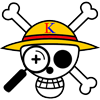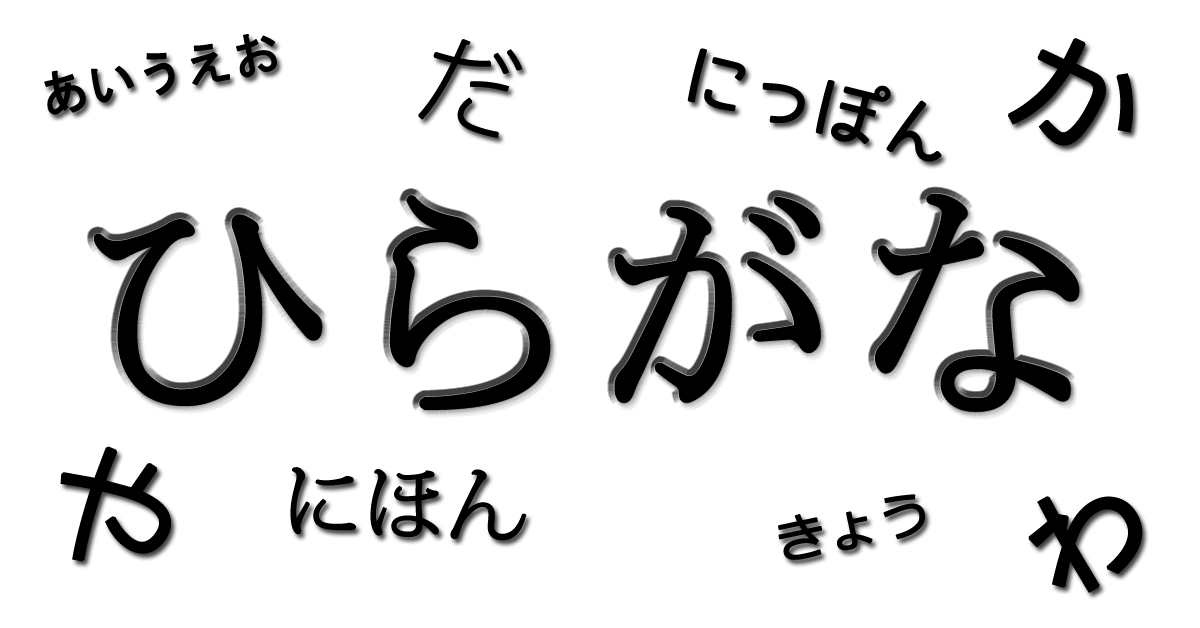Hiragana (平仮名; ひらがな) “simple/ordinary characters” is one of the two Kana systems of Japan. And today, we will learn how to read and type Hiragana!
Just a little bit of background, Kana (仮名; かな) “phonetic characters” (literally borrowed characters from the fact that it was borrowed from Chinese characters) is a syllabary and is one of the three writing systems of Japan (the other two being Kanji and Romaji). You will notice that I included a Kanji and Hiragana transcription for some of the Japanese words in this post, e.g., Hiragana – 平仮名 (kanji) – ひらがな (hiragana).
A syllabary is a set of symbols that represents the syllables or moras of a word. This is different from an alphabet which is a set of letters that make up a syllable or word. As mentioned, Kana consists of two syllabaries: Hiragana and Katakana.
Hiragana is the most basic writing system of Japan. It is the first system taught to children. Hiragana is used to write particles and Japanese words that do not have a corresponding Kanji, to inflect verb, and as a reading aid for Kanji to mention a few. Though I would personally say that Katakana is easier to learn at first because of the simple strokes, however, as you dive deeply into learning Japanese language, you will realize that Hiragana is indeed the easiest. I can even say that Kanji may be easier than Katakana.
Now let’s begin! Below is a chart of all the syllabic character of Hiragana (click image to view in HD):

Gojūon
The Gojūon (五十音; ごじゅうおん) “fifty sounds” are the base characters of Hiragana. Despite the name, there are actually only a total of 46 characters in gojūon. There are 5 empty spots and one extra character. The empty spots are supposed to be yi, ye, wi, wu and wo and the extra character is the consonant “n” which should only appear at the end of a syllable. There are no yi and wu sounds in Japanese phonology and the characters for ye (may or may not exist), wi and wo became obsolete over time.
As we can see, the order is different from English alphabetical order. The vowel sounds in gojūon are ordered a, i, u, e, o while the consonant sounds are ordered K, S, T, N, H, M, Y, R, W. The vowels are easy to memorize and the consonants can be memorize using this mnemonics: Kana Symbols, Take Note How Many You Read Well.
The consonants follow the same pattern as the vowels, e.g., a, i, u, e, o; Ka, Ki, Ku, Ke, Ko and so on. The only exceptions are the “S” line with “shi” instead of “si”; the “T” line with “chi” and “tsu” instead of “ti” and “tu”; the “H” line with “fu” instead of “hu” and of course the “Y” and “W” lines which have the empty spots mentioned earlier. This is because the Japanese do not have have “si”, “ti”, “tu” and “hu” sounds.
The ん
The ん “n” is the only character that does not end with a vowel. It only appears at the end of a word or syllable. Its pronunciation changes depending on the consonant that follows it. It is pronounced as “n” almost all the time. However, if it is followed by either an “m”, “b” or “p” then it is pronounced as “m” and it is pronounced as “ng” if it is followed by “k” or “g”.
Dakuon and Handakuon
The next table shows characters with Dakuten (濁点; だくてん) “voicing mark” and Handakuten (半濁点; はんだくてん) “half voicing mark” which are also known as ten-ten (点々; てんてん) “dots” and maru (丸, まる) “circle” respectively. Dakuten is a diacritic that looks like a quotation mark. It changes the sound of a character to its voiced counterpart Dakuon (濁音; だくおん) “voiced sound (literally murky sound)”. Only consonants starting with K, S/Ts, T, Sh/Ch and H/F can have a dakuten, changing them to G, Z, D, J and B respectively.
Try placing your hand on the front of your neck and say か (ka), you will notice that there is no vibration in your vocal cords as K is an unvoiced consonant. This time say が (ga) and you will notice that your vocal cords vibrated as G is a voiced consonant. This is also the same for S/Ts and Z, T and D, Sh/Ch and J; and H/F and B.
You may be worried that the dakuten might be confused with a quotation mark. The great thing is that the Japanese are using a corner/square brackets 「like this」 instead of a quotation mark.
The other diacritic used in Hiragana is the Handakuten. The handakuten looks like a degree symbol and is only used on consonants that start with “H” to change their sound to “P”, e.g., は (ha) to ぱ (pa). These new “P” characters are called Handakuon (半濁音; はんだくおん) “half-voiced sound (literally half-murky sound)”
Yō-on
The Yō-on (拗音; ようおん) “contracted/palatized sound” is a feature which added a “y” gliding sound to a character. It is a type of Sutegana (捨て仮名; すてがな) or Chiisai (small) Kana (小さい仮名; ちいさいかな). A yō-on is formed by combining a consonant ending in “i” sound (except “di”) with a half-size or small version of a “Y” consonant: ゃ, ゅ, or ょ (compare や, ゆ, and よ). For example: きょう (kyō) “today”.
Please take note that using a yō-on will change the meaning of a word, e.g., じゅう (jyū/jū) “ten” (compare じゆう (jiyū) “freedom”).
Chōon
Unlike the Latin letters that usually uses a macron to indicate long vowels (ā, ē, ī, ō, ū); long vowels or Chōon (長音; ちょうん) in Japanese are written by adding another vowel at the end of a syllable. For example, かあ”kaa” (compare か “ka”). The rule is that a long “A” is produced by adding あ (A), a long “I” and “E” are produced by adding い (I) and a long “U” and “O” are produced by adding う (U).
Though there are some exceptions like using え (E) and お (O) to produce a long “E” and “O” respectively, e.g., おねえちゃん (oneechan “big sister”) and おおき(ooki “big”). The long vowel symbol or Chōonpu (長音符; ちょうおんぷ), which looks like a dash “ー”, that is used in Katakana is sometimes but rarely used in Hiragana and is considered non-standard.
The proper use of long vowels in Japanese is very important as long vowels may change the meaning of a word. For example: obaasan means grandmother while obasan means aunt.
Sokuon
The Sokuon (促音; そくおん) “assimilated sound” is another feature in the form of another sutegana, a half-size/small tsu “っ” (compare つ). The purpose of sokuon is to geminate or double the sound of the consonant following it. For example: にっぽん (Nippon not Nitsupon) “Japan” (pronounced as Nip-pon ).
Like the yō-on, the sokuon also changes the meaning of a word. For example: きって (kitte) “stamp” vs. きて (kite) “come”; and しっけ (shikke) “moisture” vs. しつけ (shitsuke) “discipline”.
The sokuon is also sometimes used at the end of a sentence or word to indicate a glottal stop. It’s kind of similar to English’s exclamation point. It is also sometimes used at the start of a sentence or a word (that naturally does not starts with a small tsu) to express exclamation. For example: あっ (ah!) or っか (kka!). This usually happens in novels or manga (Japanese comics). In addition, half-size vowels are sometimes used to indicate trailing off sounds in informal writing, e.g., はぁ (haa).
Yotsugana
The Yotsugana (四つ仮名; よつがな) “four kana” are two sets of two kanas that have the same sound. You may have noticed these four in the chart. They are じ and ぢ (both pronounced as “ji”); and ず and づ (both pronounced as “zu”). These four have a very long history in Japan, however in modern use, only じ and ず are used almost all the time except when a “chi” is immediately followed by a “ji”, or a “tsu” is immediately followed by a “zu” then ぢ and づ should be use respectively. Furthermore, when a single word with a “chi” or “tsu” is compounded and the pronunciation changes to its voiced counterpart “ji” or “zu” then we should use ぢ or づ respectively.
Typing Hiragana
To type Hiragana in a computer, we just need a Japanese IME installed like Microsoft’s MS IME for windows or Google IME. Using the IME with Romaji input, simply type the Romanized equivalent like typing “ka” to get か and so on. Typing sutegana like yō-on and sokuon is the same, just type “kya” to get きゃ or “tte” to get って. Should you wish to type a sutegana alone or a small tsu at the end, simply type either a lowercase “x” or “l” before the sutegana. For example: type xtsu or ltsu to get っ; or xi/li to get ぃ. For yotsugana, when typing “ji” (or “zi”) or “zu”, we will always get じ or ず respectively; to get ぢ or づ, simply type “di” or “du” respectively.
I think that is all for today. I hope I was able to help you learn Hiragana. Should you have any other questions, please do not hesitate to ask in the comment section below. Enjoy and ありがとうございます (arigatou gozaimasu!). God Bless =>

